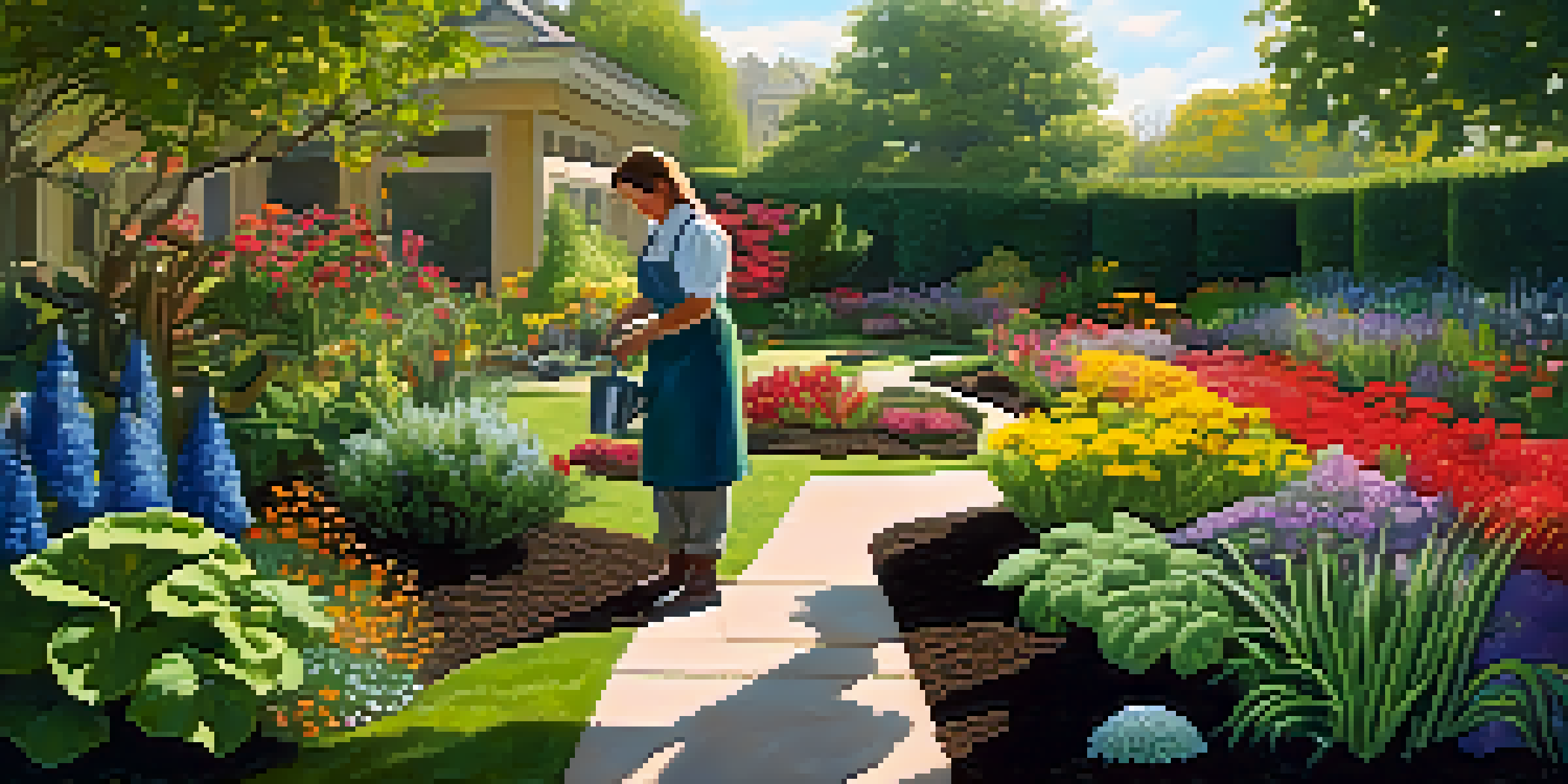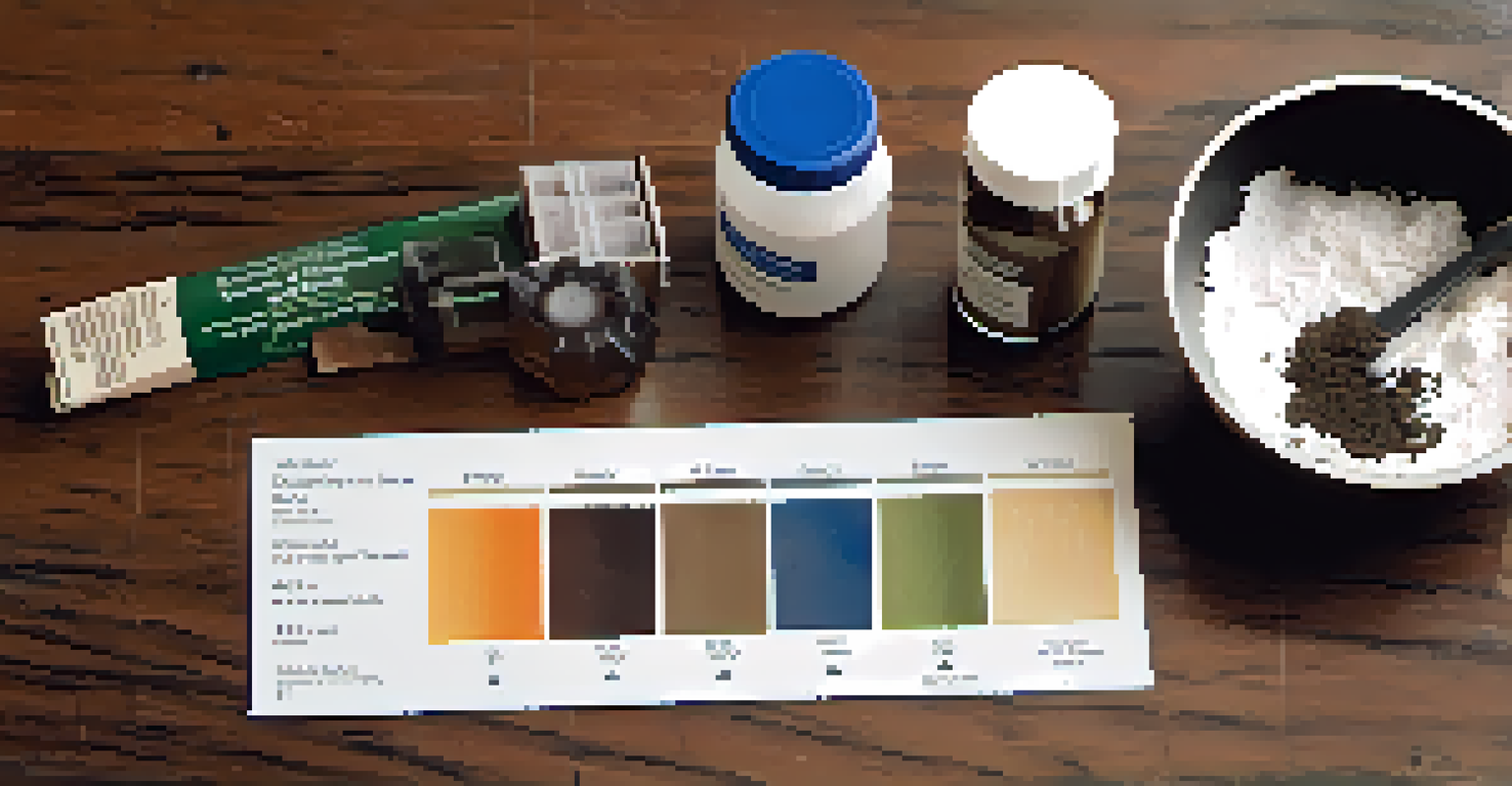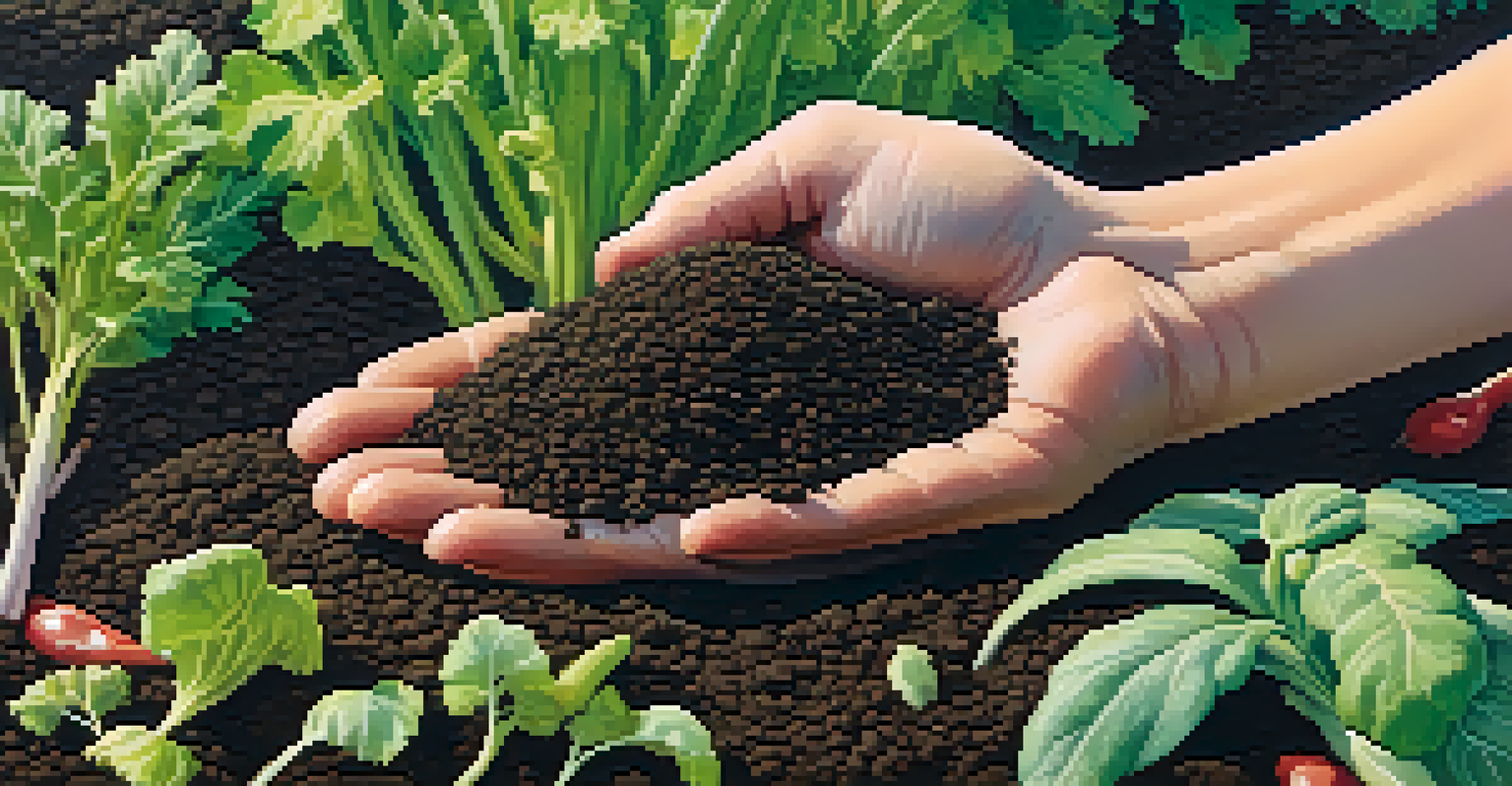Understanding Soil Composition for Eco-Friendly Gardening

What is Soil Composition and Why Does it Matter?
Soil composition refers to the various components that make up soil, including minerals, organic matter, water, and air. Understanding these components is crucial for gardeners who want to cultivate healthy plants. Just like a recipe requires the right ingredients, your garden needs the right soil mix to thrive.
Healthy soil is the foundation of a thriving garden.
Different plants have different soil requirements, which means knowing your soil composition helps you choose the right plants for your garden. For instance, while some plants prefer sandy soil that drains well, others thrive in clay soil that retains moisture. Understanding soil composition allows you to tailor your gardening approach for optimal growth.
Moreover, healthy soil composition plays a vital role in environmental sustainability. By cultivating rich, organic soil, you contribute to a thriving ecosystem that supports not only your garden but also local wildlife and beneficial insects. This interconnectedness emphasizes the importance of eco-friendly gardening practices.
The Key Components of Soil: An Overview
Soil is primarily composed of minerals, organic matter, water, and air, each playing a significant role in plant health. The mineral component, made up of sand, silt, and clay, affects soil texture and drainage. Organic matter, often derived from decomposed plants and animals, enriches the soil with nutrients essential for plant growth.

Water in the soil helps transport nutrients to plant roots while also providing hydration. Meanwhile, air is crucial for the respiration of roots and beneficial microorganisms in the soil. Balancing these components is key to creating a thriving garden ecosystem that promotes healthy plant growth.
Soil Composition Affects Plant Growth
Understanding the various components of soil, including minerals, organic matter, and moisture, is essential for cultivating healthy plants.
For gardeners, understanding the balance of these elements can lead to better gardening practices. By regularly testing soil composition, you can determine if your soil is lacking in any areas and make necessary adjustments, such as adding compost or adjusting drainage.
Understanding Soil pH and Its Impact
Soil pH measures how acidic or alkaline your soil is, and it can have a profound effect on plant health. Most plants thrive in a neutral pH range of 6.0 to 7.0; however, some plants prefer more acidic or alkaline conditions. Knowing your soil pH can help you select the right plants and amend your soil accordingly.
The soil is the great connector of our lives, the source and destination of all.
You can test your soil’s pH using a home test kit or by sending a sample to a local lab. If you find your soil is too acidic, you might need to add lime to raise the pH. Conversely, if it's too alkaline, adding sulfur can help lower the pH, creating a more hospitable environment for your plants.
Adjusting soil pH is not an overnight process, but with patience and consistent efforts, you can create an ideal growing environment. Monitoring pH levels regularly can help you maintain balance in your garden, ensuring your plants receive the nutrients they need to flourish.
The Role of Organic Matter in Soil Health
Organic matter is the lifeblood of healthy soil, providing essential nutrients and improving soil structure. It consists of decomposed plant and animal material, which enriches the soil and enhances its ability to retain moisture. A soil rich in organic matter is often referred to as 'living soil' because of the diverse microorganisms that thrive within it.
Adding organic matter, such as compost or aged manure, can dramatically improve soil quality over time. These amendments not only provide nutrients but also help improve soil aeration and drainage. Think of it like adding a secret ingredient to your favorite dish; it enhances flavor and texture, making everything better.
Organic Matter Enhances Soil Health
Incorporating organic matter like compost enriches soil, improves its structure, and contributes to sustainable gardening practices.
In eco-friendly gardening, utilizing organic matter aligns with sustainable practices. It reduces the need for chemical fertilizers, promotes biodiversity, and helps sequester carbon, contributing positively to the environment. By focusing on organic matter, gardeners can cultivate healthy, thriving ecosystems.
Soil Texture: Understanding Sand, Silt, and Clay
Soil texture is determined by the proportions of sand, silt, and clay in your soil. Sand is the largest particle, providing good drainage but low nutrient retention. Silt is smaller, offering better nutrient-holding capacity, while clay, the smallest particle, can retain moisture but may lead to drainage issues if present in high amounts.
The ideal garden soil often has a balanced texture, known as loam, which combines the benefits of sand, silt, and clay. This balance promotes good drainage while retaining enough moisture and nutrients for plant growth. Understanding your soil texture can help you determine how to amend it for your specific gardening needs.
If your soil is too sandy, you might consider adding organic matter to improve its nutrient-holding capacity. On the other hand, if you have heavy clay soil, incorporating sand and compost can enhance drainage. Knowing your soil texture is the first step to creating a thriving garden.
Testing Your Soil: A Step-by-Step Guide
Testing your soil is an essential part of eco-friendly gardening, as it provides crucial information about pH, nutrient levels, and soil texture. You can easily conduct a soil test using a home testing kit or by sending samples to a nearby agricultural extension office. This process helps you understand your soil's strengths and weaknesses.
Once you have your results, analyze them to identify any deficiencies or imbalances. For example, if your test shows low nitrogen levels, you might want to incorporate organic fertilizers or compost to enrich the soil. Conversely, if your soil is high in certain nutrients, you can adjust your gardening practices accordingly.
Soil Composition is Crucial
Understanding soil composition helps gardeners select the right plants and create optimal growing conditions.
Regular soil testing is like a health check-up for your garden. It allows you to catch potential issues early and adapt your gardening strategies for better outcomes. By staying informed about your soil's condition, you can help ensure a bountiful and sustainable garden.
Sustainable Practices for Improving Soil Composition
Improving soil composition sustainably involves practices that enhance soil health without harming the environment. Techniques such as crop rotation, cover cropping, and mulching can significantly improve soil structure and fertility. These methods not only benefit your garden but also contribute to broader ecological health.
For example, cover crops like clover or rye can prevent soil erosion and add organic matter to your soil when tilled under. Meanwhile, mulching helps retain moisture, suppress weeds, and add nutrients as it decomposes. By incorporating these practices into your gardening routine, you can create a more resilient and productive garden.

Ultimately, adopting sustainable practices fosters a healthier ecosystem, allowing your garden to thrive while benefiting the environment. Every small step you take towards improving soil composition contributes to a greener, more sustainable planet.